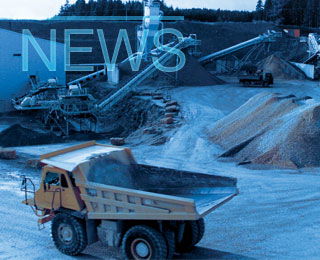Taiheiyo Cement Corp is boosting its bottom line in an efficient and ecological way by recycling industrial waste into materials for making cement.
In the year ended March 2011, Taiheiyo used 395kg of waste for every tonne of cement it produced. The firm could lift its bottom line further by increasing the amount of waste it uses.
As part of its efforts to expand its recycling operations, Taiheiyo is now expanding the Kamiiso plant's capacity to deal with waste. It is also installing equipment to eliminate chlorine, which shortens the useful life of cement.
When the work is completed in May, the plant will start accepting 50,000t of ash a year from the city of Sapporo and other local governments. The ash is produced through the incineration of garbage.
The Tokyo-based company generates revenue by currently accepting a variety of waste types, from old tyres to scallop shells. And by using the scraps to produce its key product, it cuts materials costs. This system also enables the company to make an ecological contribution to the communities it deals with, said Toshiki Kaminaga, chief of the firm's Kamiiso plant in Hokuto, Hokkaido. The plant took in an estimated 1.3Mt of waste in the year through March 2012, mainly coal ash from thermal power plants but also roughly 700t of shells.
The Kamiiso facility started accepting scallop shells from the local fisheries industry in the winter of 2010. For seafood firms, finding ways to dispose of the shells once the meat has been removed for human consumption has long been a headache. Taiheiyo Cement heats and breaks down the shells at high temperature so that they can be used as materials for cement.
The company's recycling segment is part of its environmental business unit, which posted an estimated operating profit of JPY6bn (US$74m) for the fiscal year ended March, up 15% from the previous year. The cement-making unit generated an estimated profit of JPY15bn, up 90%, but the figure includes 85% of the money earned by recycling waste.
The company is expected to enjoy strong profit growth again this year, thanks to demand related to reconstruction work in areas devastated by the Great East Japan earthquake. Domestic demand for cement in the current fiscal year should grow by 1%, to 43Mt – the second-straight year of growth.
Taiheiyo is now recovering from losses caused by plunging demand in the wake of the global recession. And its recycling scheme will be a key factor in determining whether its growth continues.
